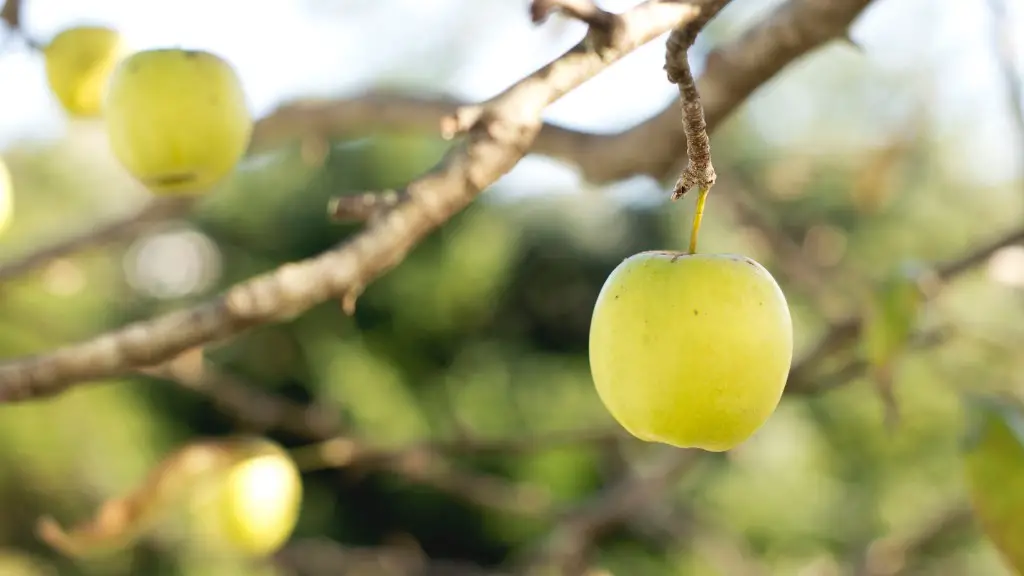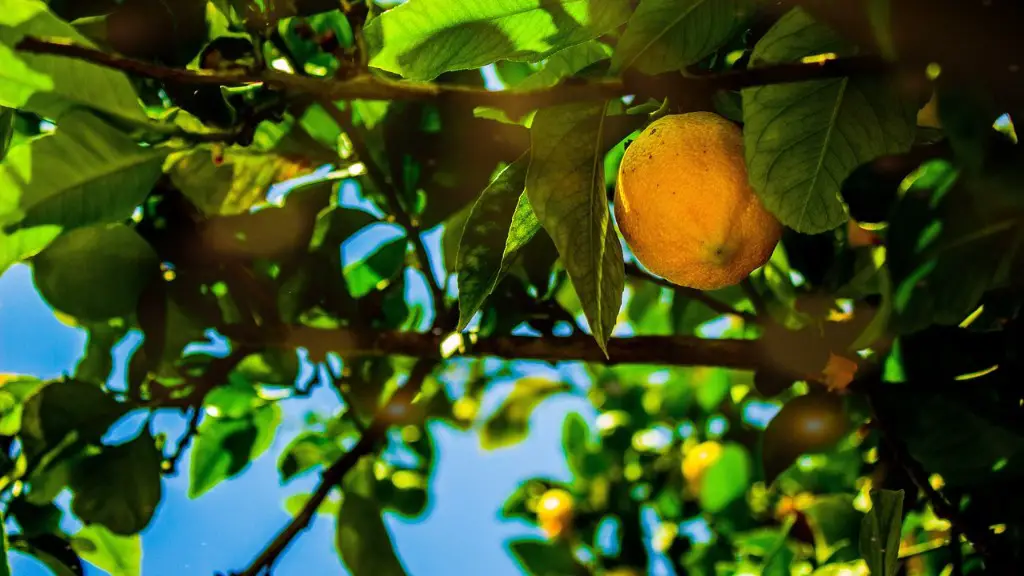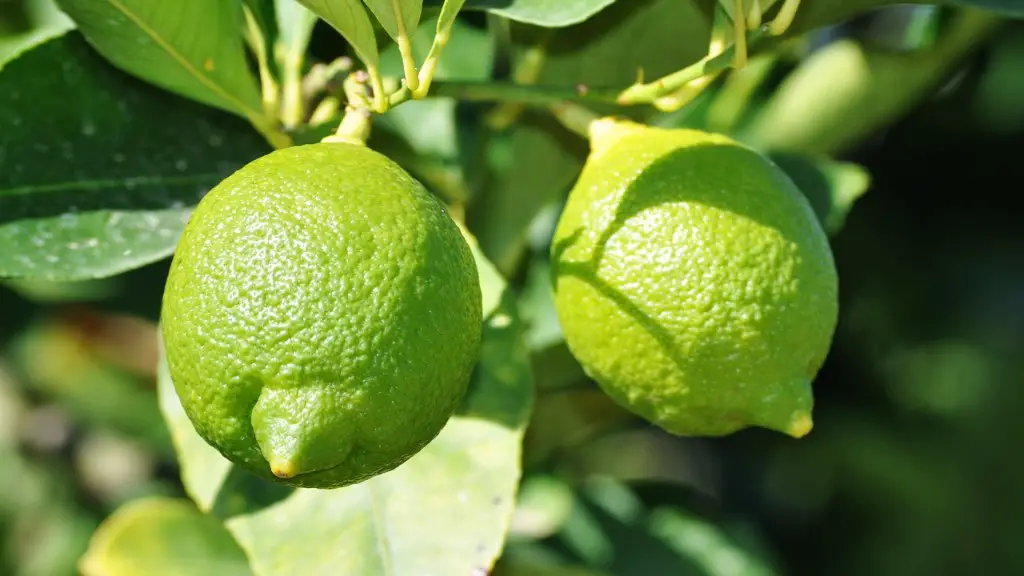Avocado trees (Persea americana) are a subtropical and tropical fruit tree that is widely cultivated in warmer climates. The trees can reach heights of up to 65 feet tall and can sometimes produce one ton of fruit in a single year. The fruits of the avocado tree have a high oil content and are used in many recipes today. The avocado tree can also have up to 100 years of life, and many of these trees are found in California and Florida, where they are a popular crop.
Avocado tree height can vary depending on the variety and the habitat. Environmental factors like temperature, soil fertility, and water availability impact the overall size and growth of an avocado tree. However, the average height for avocado trees is between 15 to 30 feet tall with a few varieties reaching up to 45 feet in height. The canopy of the tree can measure between 15 and 45 feet in width, depending on the species of the tree.
The height of an avocado tree is also affected by the amount of pruning that it receives throughout its life. Pruning helps to create a stronger tree with a well-shaped frame, while also helping to shape the canopy of the tree. Avocado trees require regular pruning once they are established in order to keep the tree healthy and to preserve its size. Pruning is best done in the early spring.
The root system of the avocado tree is also important when it comes to determining how tall the tree will be. The root system of the avocado tree encompasses an underground area of up to 12 feet, where the feeder and lateral roots anchor the tree. The tap roots can actually be quite long, with some going as deep as 20 to 30 feet, providing the tree with stability and access to nutrients.
In terms of care, the avocado tree will need proper sunlight, water, and nutrients to reach the full potential of its height. Avocado trees need to be planted in well-draining soil and can do best when they are watered regularly. Too much water can lead to root rot, while inadequate water can slow down the growth of the tree. The best locations to plant an avocado tree is one with full sun and protection from wind.
Overall, the height of an avocado tree can vary greatly depending on the variety of the tree and the environment in which it is grown. A healthy avocado tree will reach heights of up to 25 to 30 feet tall, but can reach upwards of 45 feet with proper care and pruning. The root system and amount of pruning also play a significant role in the height of the avocado tree, so it is important to take those into consideration when planting one.
Location
The location where an avocado tree is planted also plays a role in how tall the tree will be. Tropical and subtropical climates are ideal for avocado trees, with temperatures that stay consistently between 65 to 85 degrees Fahrenheit. Cold temperatures can slow down the growth and development of the tree, which limits its overall height. This is why it’s important to choose an area that gets plenty of sun and is protected from wind.
Avocado trees do well in humid climates, as they provide the tree with optimal moisture and nutrients. This can also help the tree to reach its fullest potential in terms of height. Avocado trees do not require a lot of maintenance, but they do need to be fertilized once a year and watered regularly in order to reach their optimum height.
In terms of soil fertility, avocado trees prefer well-draining soil that is rich in organic matter. Soil that is rich in phosphorus, nitrogen, and potassium will help to promote the best growth in the tree. Applying fertilizer on a regular basis can also help to supply the tree with the necessary nutrients for optimal growth.
Harvesting
Harvesting avocado fruits from the tree can help to increase the overall height of the tree. Harvesting the fruits when they are ripe can help to promote more growth and faster growth, which increases the overall height of the tree. Avocado trees that are harvested earlier in the year will have the opportunity to produce more fruits, which can help to further increase the height of the tree.
By harvesting the right amount of fruits at the right time, the tree will have enough energy to grow further. Leaving more fruits on the tree can also help promote the growth of new branches, which will help the tree reach its fullest potential.
Harvesting the fruits also helps to ensure that the tree will not become over-burdened, which can stunt its growth. Too many fruits on the tree can be damaging, which makes it important to only harvest the amount that is necessary.
Pruning
It is essential to prune avocado trees in order to keep them healthy and encourage faster growth. Pruning helps to create a stronger tree with a well-shaped frame and helps to shape the canopy of the tree. Pruning is best done in the early spring when the tree is still in its growth phase.
Pruning helps to control the size of the avocado tree as well as stimulate fruit production. Pruning also helps to promote a strong root system, which is essential for the health of the tree and its overall height. Pruning should be done with care and always be sure to remove the cut off branches away from the tree to avoid any potential damage.
Avocado trees need to be pruned regularly in order to reach their full potential in terms of size and growth. Pruning should be done twice a year and always with the goal of pruning off any branches that are too weak or crowded.
Climate Change
Climate change can also have an impact on the overall height of the avocado tree. In recent years, the warmer climates of the world have seen an increase in temperature and this can affect the height of the avocado tree. Mainly, the exposure to heat and cold can cause the tree to become stressed, leading to slower growth.
In order to combat these effects, it is important to keep the tree in an area that gets a suitable amount of shade and exposure to the sun. It is also important to ensure that the tree has adequate soil and water to ensure maximum growth and fruit production.
Fertilizing the tree can also help to increase its overall growth and height, as it provides the tree with the nutrients it needs to thrive. Another way to protect the tree from the effects of climate change is to use mulch, which helps to keep the soil cool and moist.
Preservation
Finally, preserving the avocado tree is essential in order to keep it healthy and reach its full potential. Regular pruning and fertilizing are essential for preserving the tree, as is ensuring that it has access to enough water and nutrients. Whenever it is possible, it is also important to protect the tree from environmental factors that can affect its growth, like wind and cold.
Regular inspections are also a great way to take proactive steps in preserving the tree’s health. Inspections can help to identify any potential issues early on, which can help to prevent any more serious damages in the future.
Preserving the avocado tree will not only help it to reach its full potential in size and growth, but it will also help the tree to efficiently produce fruits year after year. A healthy avocado tree is essential to a successful crop, so it is important to take the necessary steps to protect it.




